JFR 101
funny car
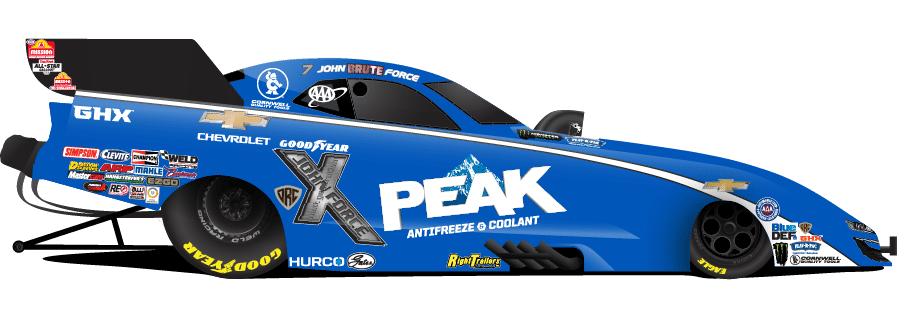
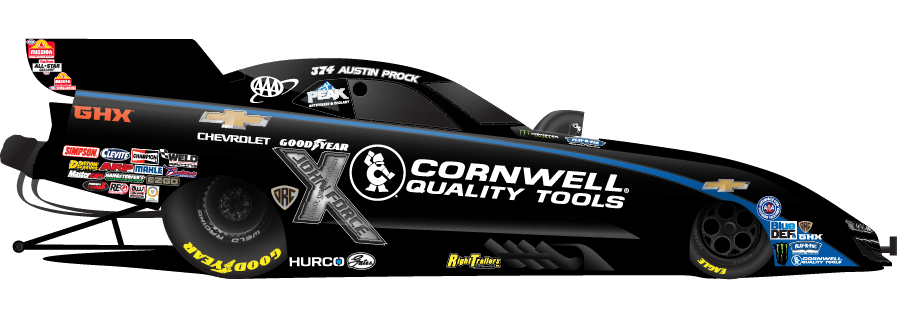
EXTERIOR
| Wheelbase: 125 inches |
| Weight with Driver: 2,585 pounds |
| Chassis: Force American Made |
| Goodyear Tires: 23.0 x 5.0 – 15 (Front); 36.0 x 17.5 – 16 (Rear) |
ENGINE
Engine Size: 500 cubic inch |
Bore and Stroke: 4.187, 4.500 |
Horsepower: 11,000+ |
Fuel Type: 90% Sunoco Nitromethane |
Supercharger: 1471 |
Fuel Capacity: 18 gallon |
Oil System: Dry Sump |
top fuel dragster

EXTERIOR
|
Wheelbase: 300 inches |
|
Weight with Driver: 2,340 pounds |
|
Chassis: Force American Made |
|
Goodyear Tires: 22.0 x 4.0 – 15 (Front); 36.0 x 17.5 – 16 (Rear) |
ENGINE
Engine Size: 500 cubic inch |
Bore and Stroke: 4.187, 4.500 |
Horsepower: 11,000+ |
Fuel Type: 90% Sunoco Nitromethane |
Supercharger: 1471 |
Fuel Capacity: 18 gallon |
Oil System: Dry Sump |
Frequently Asked Questions
Quick refers to the elapsed time. E.T. is the time it takes the car to go from A to B and is measured to the thousandth of a second. Top Fuel dragsters can make a pass in approx. 3.6-3.7 seconds. Funny Cars can make a pass in approx. 3.7-3.9 seconds. JFR claimed the national E.T. record when Brittany Force went 3.623 seconds in Reading in 2019. The race day ladder is set based on the driver’s best E.T. from qualifying.
Fast refers to the speed and is measured in miles per hour to the ten thousandth. Our cars can go over 330 MPH. JFR claimed the national speed record when Robert Hight went 339.87 MPH in Sonoma in 2017.
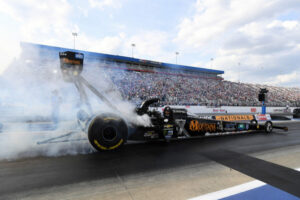
Before every run, the driver will go through the water box and spin the tires in what’s called a burnout. This helps warm and clean the rear tires and puts rubber on the track for better traction.
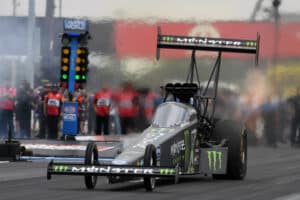
The electronic device that starts each race is commonly called the Christmas Tree. On each side of the tree are six lights; a circle of small blue lights at the top (the top half for pre-staging and the bottom half for staging), three larger amber bulbs, a green bulb, and a red bulb.
Two light beams cross the starting line area and connect to trackside photocells, which are wired to the tree and electronic timers in the control tower. When the front tires of the car break the first light beam, the pre-stage beam the pre-stage lights up on the tree and indicate that the driver is about seven inches from the starting line.
When the driver rolls into the stage beam, the front tires are exactly on the starting line. The stage bulbs light, indicating that the car is ready to race. When both cars are fully staged, the starter will activate the tree, and each driver will focus on the three amber bulbs on his/her side of the tree.
In the nitro classes, all three amber lights will flash simultaneously, followed by four-tenths of a second later by the green light.
Nitromethane, known as Nitro.
CH3NO2 is the result of a chemical reaction between nitric acid and propane.
Our cars have an 18 gallon fuel tank and we fill it approximately 14-16 gallons. From firing engines to burnout to staging, the car uses approximately 10 gallons of nitromethane. The quarter mile run uses approximately 5-6 gallons.
When a cylinder runs too rich (too much fuel in the air/fuel mixture) and prevents the spark plug(s) from firing. When a spark plug fails to ignite, it substantially decreases the total power output by the engine. A dropped cylinder is often distinguishable by raw fuel spewing from the exhaust header.
When a car loses traction, the tires begin to slip and this causes tire smoke. This is usually caused by trying to apply the clutch too fast on a run.
When a driver with a slower elapsed time (E.T.) wins an elimination round because he or she had a better reaction time, thus leaving the starting line first.
